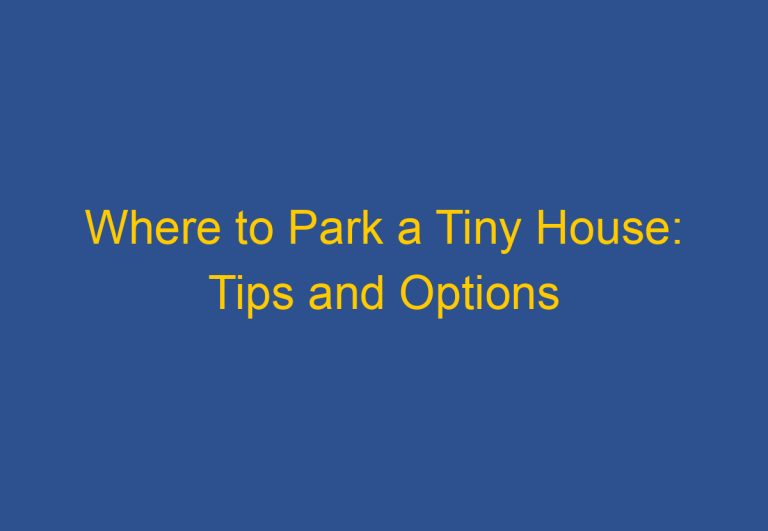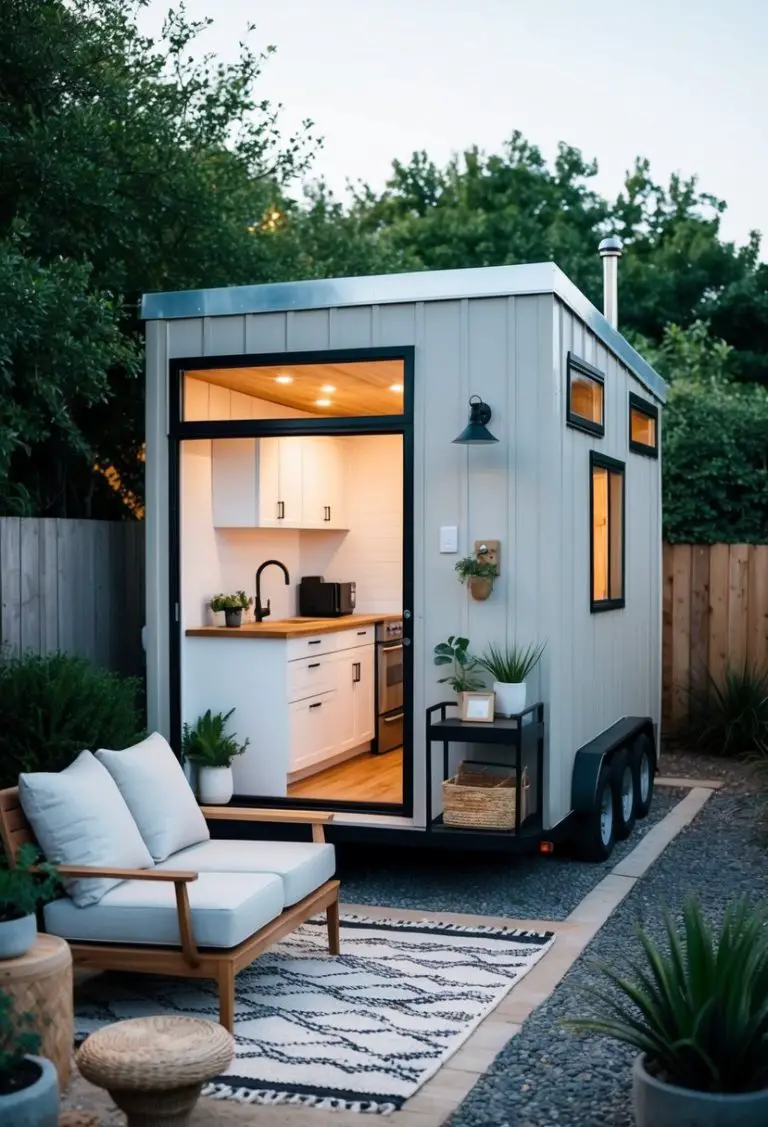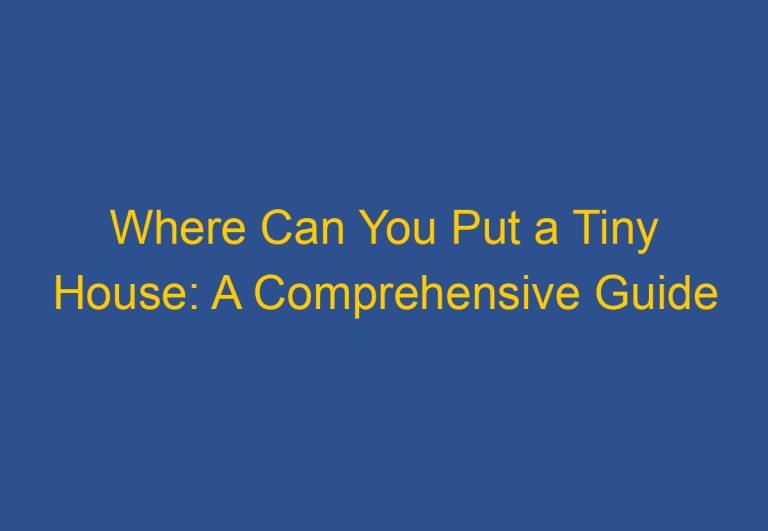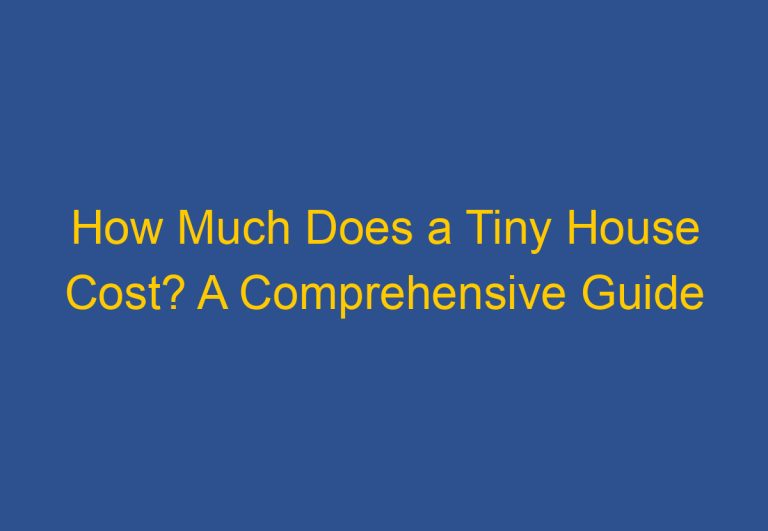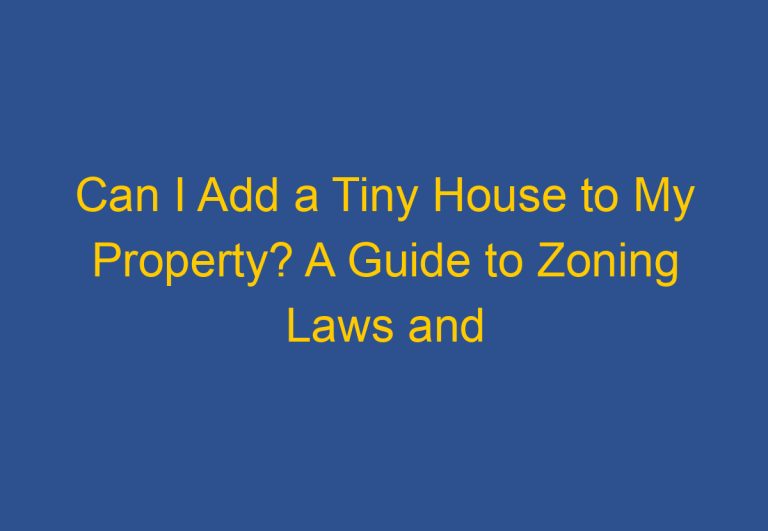Are Tiny Houses Really Cheaper? A Cost Comparison Analysis
Tiny houses have been gaining popularity in recent years, with many people attracted to the idea of living a simpler, more minimalist lifestyle. One of the main selling points of tiny houses is their affordability. But are tiny houses really cheaper than traditional homes? This article will explore the cost savings of living in a tiny house and examine whether the financial benefits outweigh the challenges and limitations of tiny living.
According to a recent study, the average cost of a tiny home is around $52,000, which is significantly cheaper than the average price of a typical U.S. home. However, the cost of a tiny house can vary significantly depending on factors such as size, materials, labor, and location. Building a tiny house on a foundation can cost anywhere between $10,000 to $80,000, while a tiny house on wheels can cost between $30,000 to $100,000 or more. While these costs may seem high, they are still much more affordable than the average cost of a traditional home.
Analyzing the Cost of Tiny Houses
Initial Costs and Investments
When it comes to the initial cost of a tiny house, there are a few factors to consider. The cost to build a tiny house can vary greatly depending on the materials used, labor costs, and whether the house is built on a foundation or on wheels. According to a study, the average cost of a tiny house in America is $52,000, which is 87% cheaper than a regular home. However, per square foot, tiny homes are 62% more expensive than full-size homes.
One of the main advantages of a tiny house is that it requires a smaller down payment and land loan, making it more accessible for those who cannot afford a traditional home. Additionally, if the homeowner is handy and can build the tiny house themselves, they can save on labor costs. However, it’s important to keep in mind that building a tiny house can still be a significant investment, and it’s crucial to budget accordingly.
Ongoing Financial Commitments
While the initial cost of a tiny house may be lower than that of a traditional home, there are ongoing financial commitments to consider. Utilities, maintenance, and property taxes are all expenses that homeowners must factor into their budget. It’s important to note that while a tiny house may be energy-efficient and have solar panels, it still requires upkeep and maintenance.
Another consideration is the potential for debt. If the homeowner finances their tiny house with a mortgage, they will have to make regular payments and may accrue debt. It’s essential to consider the long-term financial commitment before making the investment in a tiny house.
Comparative Expenses with Traditional Homes
While tiny houses may be cheaper upfront, they can be more expensive in the long run when compared to traditional homes. According to a study, tiny houses average $300 per square foot, which is double the cost of traditional homes, which average at $150 per square foot. However, it’s important to note that tiny houses typically have a smaller square footage, resulting in lower overall costs.
Overall, the cost of a tiny house can vary greatly depending on the materials used, labor costs, and ongoing expenses. While a tiny house may be a more affordable option for some, it’s crucial to consider all financial commitments before making the investment.
Lifestyle Considerations in Tiny Living
Living in a tiny home is not just about saving money; it is also a lifestyle choice that requires careful consideration. In this section, we will explore some of the lifestyle considerations that come with tiny living.
Downsizing and Minimalist Living
One of the most significant challenges of tiny living is downsizing. People who live in tiny homes must be willing to let go of many of their possessions and embrace a minimalist lifestyle. However, this can also be a liberating experience, as it allows people to simplify their lives and focus on what is truly important.
Flexibility, Freedom, and Mobility
Another benefit of tiny living is the flexibility, freedom, and mobility it offers. Many tiny homes are built on wheels, which means that homeowners can easily move their homes from one location to another. This is especially appealing for people who love to travel or who want the freedom to live wherever they choose.
Community and Legal Aspects
Living in a tiny home can also have legal and community implications. Zoning laws and building codes can vary widely from one place to another, so it is essential to research the regulations in your area before building or buying a tiny home. Additionally, living in a tiny home can be a great way to build a sense of community, as many tiny home communities have sprung up in recent years.
Overall, tiny living is a lifestyle choice that requires careful consideration. While it can be a great way to save money and simplify your life, it is not for everyone. However, for those who are willing to embrace the minimalist lifestyle and the challenges that come with it, tiny living can be a rewarding and fulfilling experience.
Frequently Asked Questions
How much does it typically cost to build a 2-bedroom tiny house?
The cost of building a 2-bedroom tiny house can vary widely depending on factors such as size, materials, and location. However, on average, building a 2-bedroom tiny house can cost anywhere between $50,000 to $100,000. It is important to note that these costs can be significantly lower than building a traditional home of the same size.
What is the average price for a 400 sq ft tiny home?
The cost of a 400 sq ft tiny home can vary depending on the location, materials used, and whether it is built on a foundation or on wheels. On average, a 400 sq ft tiny home built on a foundation can cost anywhere between $30,000 to $60,000, while a tiny home on wheels can cost between $50,000 to $100,000.
Can you save money by choosing a tiny house on wheels?
Choosing a tiny house on wheels can be a cost-effective option for those who are looking to save money on housing costs. By choosing a tiny house on wheels, individuals can avoid the costs associated with purchasing land and building a foundation. Additionally, tiny houses on wheels can be moved from one location to another, which can save money on rent or mortgage payments.
Is purchasing a tiny home a financially sound investment?
Purchasing a tiny home can be a financially sound investment for those who are looking to save money on housing costs. However, it is important to consider the upfront costs of building or purchasing a tiny home and the long-term financial implications of tiny house living.
What are the long-term financial implications of tiny house living?
While tiny house living can save money on housing costs, it is important to consider the long-term financial implications. For example, tiny houses may require more frequent repairs and maintenance, which can add up over time. Additionally, tiny houses may not appreciate in value as much as traditional homes.
What are common financial drawbacks of transitioning to a tiny house lifestyle?
One common financial drawback of transitioning to a tiny house lifestyle is the upfront costs of building or purchasing a tiny home. Additionally, individuals may need to purchase new furniture and appliances that are suitable for a smaller living space. Finally, individuals may need to pay for additional storage space if they are unable to fit all of their belongings in their tiny home.






